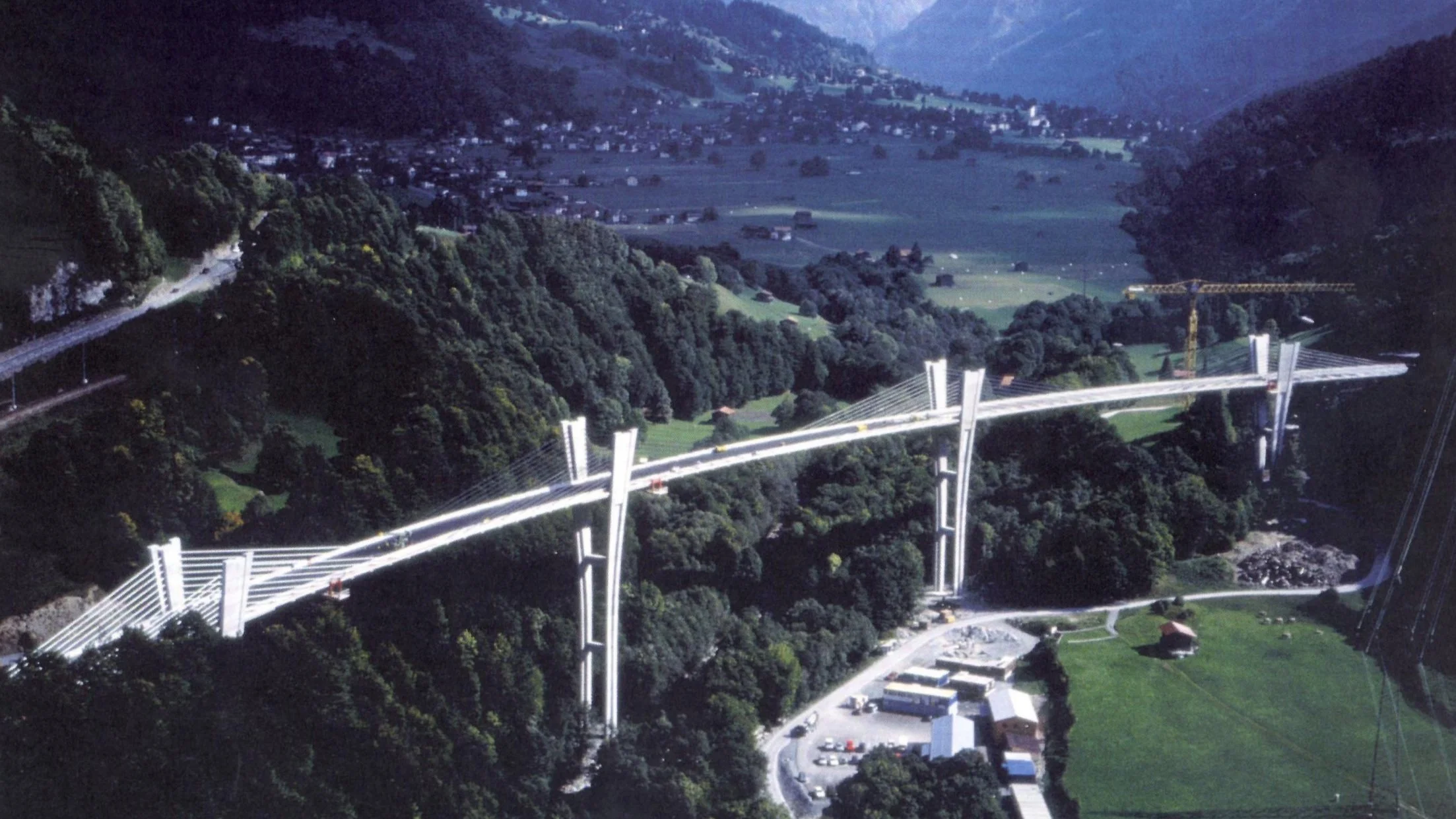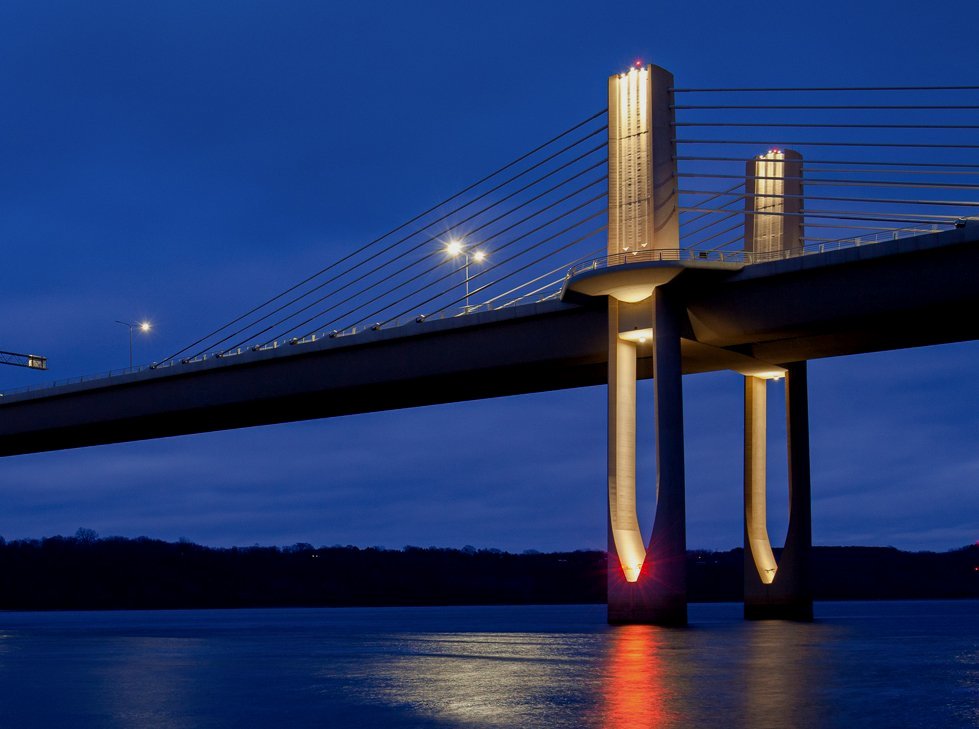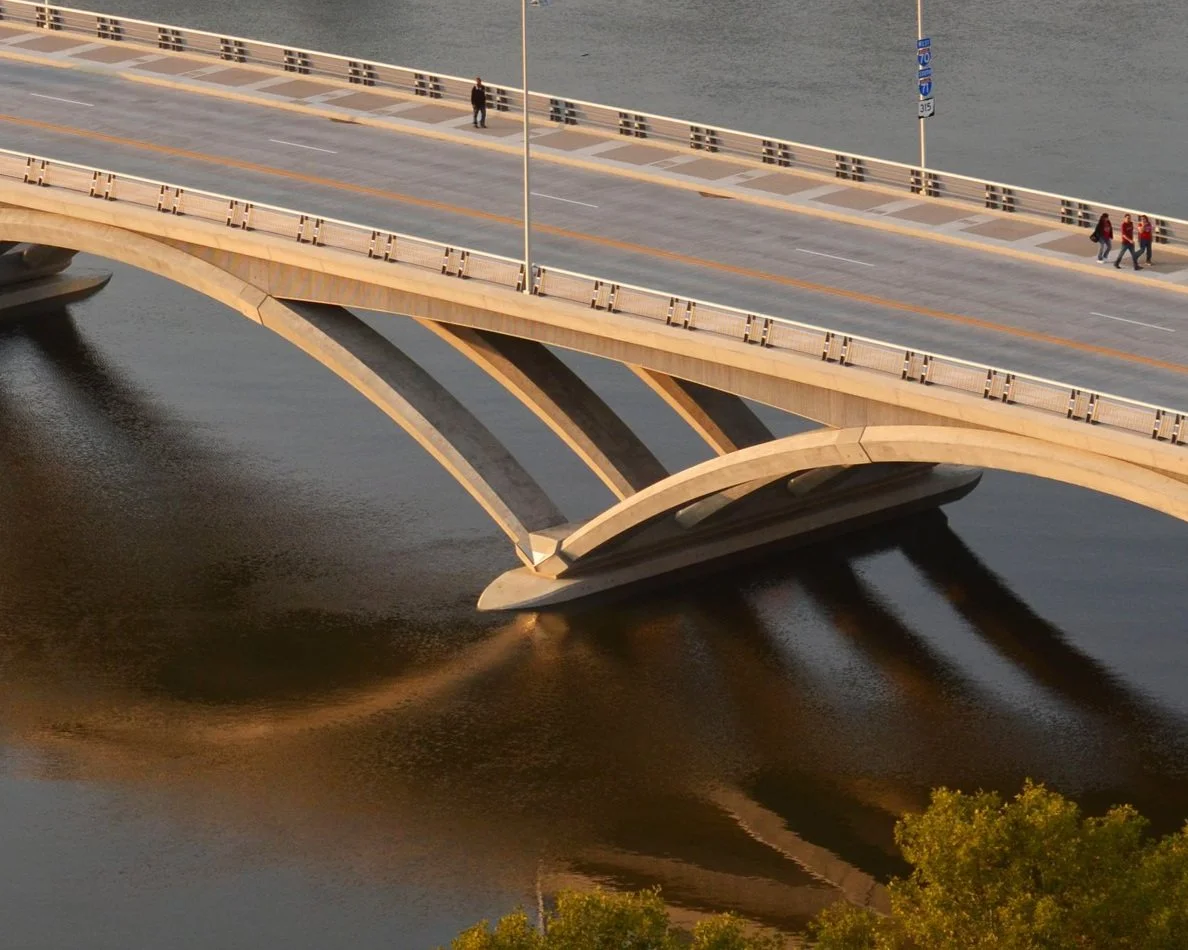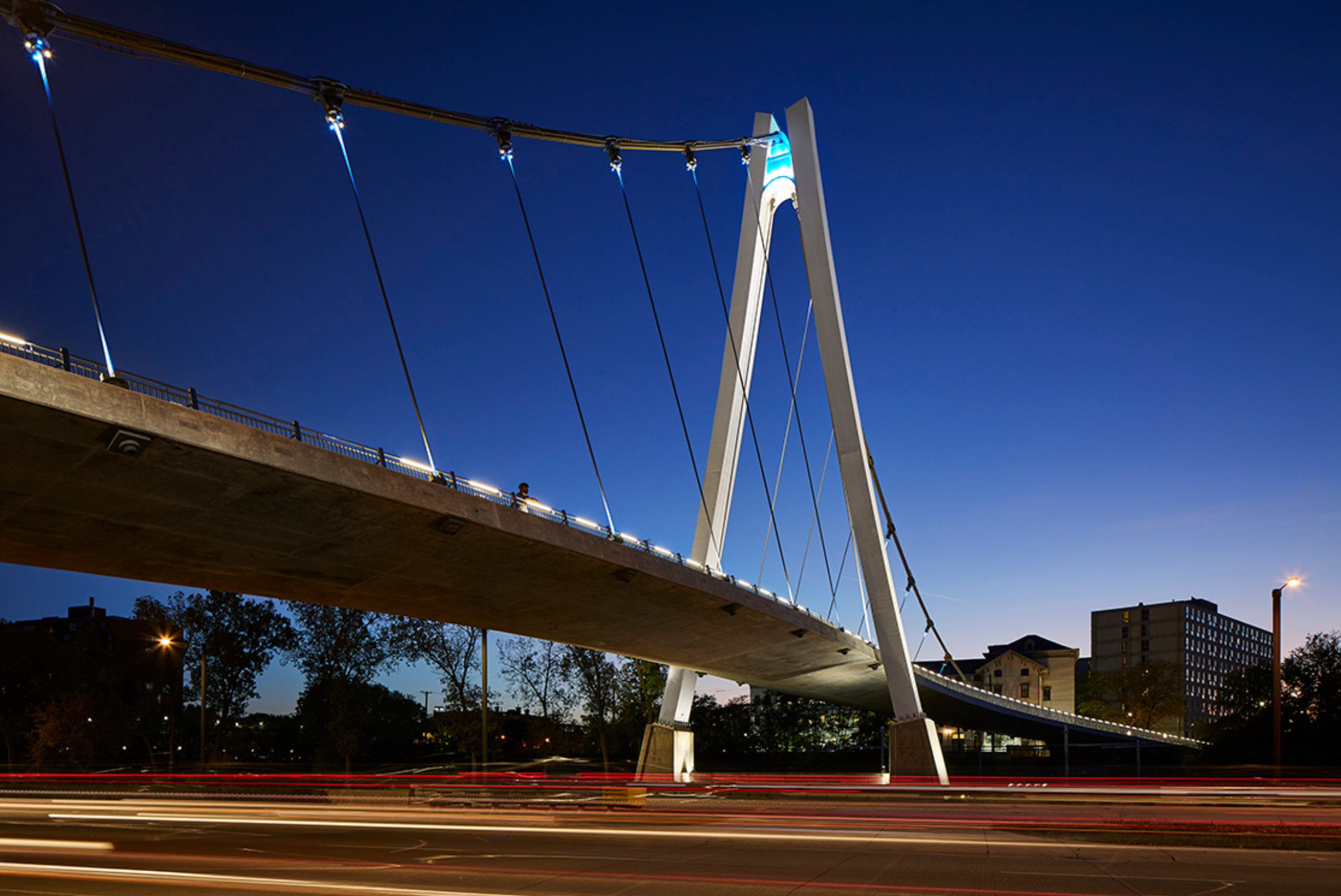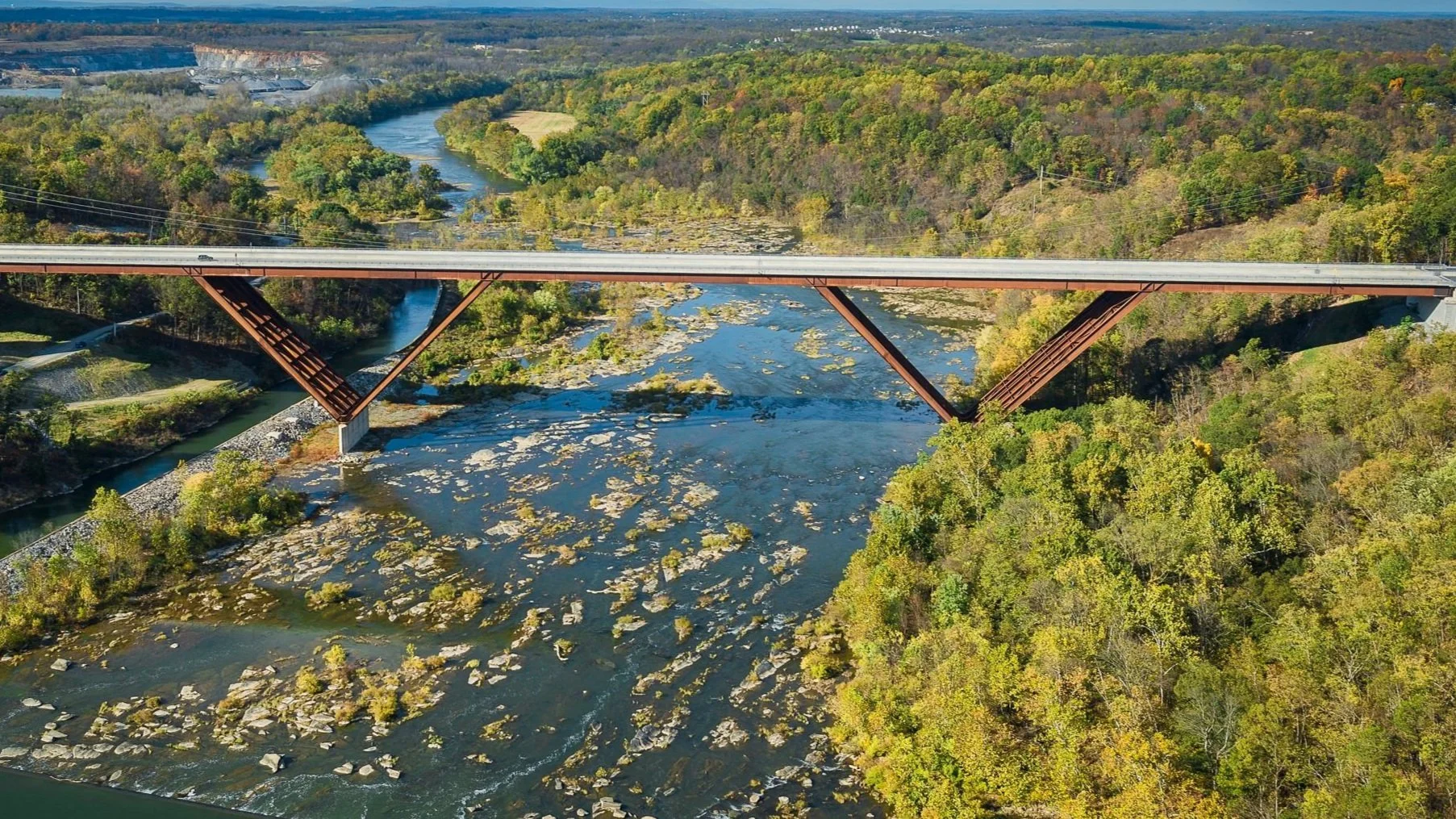RESOURCES:
For Practitioners and Design Students:
All the books and papers in the list below should be interesting and helpful.
For Community Advocates:
Books and Papers in the list below marked with asterisks should be interesting
and helpful, but you might want to sample other titles as background.
Christian Menn, Sunniberg Bridge.Criteria for Selection:
These selections are unapologetically the personal opinion of Mr. Gottemeoeller. They are based on observations from a 60-year career in transportation, first as a public works administrator and then, in the last 30 years, directly in bridge design. He has been involved in the creation of more than 30 bridges of all sizes, specializing in the aesthetic and urban design aspects of bridge design, based on degrees in architecture, urban design and civil engineering and individual licenses in engineering and architecture.
His guiding principle is that the books must be written by bridge engineers who have actually designed bridges or engineer/historians writing about such people. The reason is simple: only people who have done it can fully understand the intense balance that must be struck between community hopes and aspirations, the ability of materials to carry extreme loads and the public resources available to create and maintain the structure. After all, the whole point of the exercise is that the bridge must stand, and stand long enough to repay the resources invested in it.
There are no books here by architects and architectural critics because few architects and fewer critics take the time to understand what bridges are really about. Instead, following the “starchitect” tradition of much of architecture, they look for novelty for novelty’s sake, cost be damned. There are exceptions. A few architects that have made a study of bridges have become useful aesthetic and urban design advisors to bridge engineers. Some of those bridges are presented in the 12 Examples page.
Certainly there may be additional resources out there that would meet the above criterion. Suggestions from visitors are welcome.
St. Croix River Crossing
Resource List:
1. Books by Bridge Designers.
Many of the most accomplished bridge designers have written about their bridges and their ideas. All have important things to say about Bridge Art. Christian Menn, Jörg Schlaich and Fritz Leonhardt were the most important bridge designers of the late 20th century and early 21st century. Gustave Eiffel was the most important bridge designer of the late 19th century. Before he built the tower in Paris he built a number of bridges that set records for height. They taught him how to handle wind loads on tall structures.
Brücken/Bridges*, Christian Menn, 2015, Verlag Scheideggar & Speis, Zurich, German and English, Available from the University of Chicago Book Store and others;
Leight Weit/Light Structures, Jörg Sclaich & Rudolph Bergerman, 2003, Prestei, Munich, Berlin, New York & London, German and English
Brücken/Bridges, Fritz Leonhardt, 1982, Verlags-Anstalt GmbH, Stuttgart, German and English
Gustave Alexandre Eiffel, Paco Ascensio, 2003, teNues Publishing Group, Dusseldorf, New York, London & Paris, English, German, French & Spanish.
Christian Menn, Sunniberg Bridge. 2. Books by Engineer/Historians
The idea that bridges are a form of art dates back to the invention of civil engineering as a profession by Thomas Telford in the late 18th century. Beginning with his study of the bridges of Robert Maillert, David Billington has brought up this entire history up to the present day. Andreas Keil looks into the future by examining the new ideas of younger engineers benefitting from the innovation possible with pedestrian bridges.
Robert Maillert and the Art of Reinforced Concrete, David P. Billington, 1990, The MIT Press, Cambridge & London
The Tower and the Bridge*, David P. Billington, 1983, Basic Books, Inc., New York
Pedestrian Bridges, Andreas Keil, 2013, Institut für Internale Architektur-Dokumention GmbH & Co. KG, Munich, German & English.
Frederick Gottemoeller, Rich Street Bridge 3. Design Guidelines
Many believe that the creation of art requires personal talent and insight which can’t be taught. There is, of course, much truth in that. Nevertheless, art schools have existed for centuries. They give budding artists a place to learn the tools of their trade and study the works of prior masters. The goal of these books is to do the same for bridge engineers. In addition, Bridgescape’s richly illustrated case studies of recent bridges provide real-world coverage of all aspects of bridge building, with an emphasis on the relationship between community aspirations, context sensitive solutions, engineering challenges and cost.
Bridgescape, 2nd Ed*, Frederick Gottemoeller, 2004, ohn Wiley & Sons, Inc., New York, Available through Amazon and others.
Bridge Aesthetics Sourcebook, Fredrick Gottemoeller, Editor, American Association of State Highway and Transportation Officials, 2010, Washington, DC,
Bridge Engineering Handbook, Chapter 3, Aesthetics, Frederick Gottemoeller, 2014, CRC Press, Boca Raton, FL
35th treet Pedestrian Bridge 4. Periodicals and Papers
Often the best way to learn about a topic is studying prior cases. You can learn a lot from what happened when Columbus, Ohio replaced the crumbling Town Street bridge in the city’s Civic Center. Aspire’s a quarterly issues include case studies of current brdidges with an aesthetic commentary by Mr. Gottemoeller.
Aspire*, Published quarterly by the Precast/Prestressed Concrete Institute, Chicago, Illinois.
Design and Construction of the Rich Street Bridge over the Scioto River, Columbus, Ohio, Frederick Gottemoeller with John Shanks and Travis Butz, Proceedings, 2013 National Bridge Conference, Precast/Prestressed Concrete Institute, Chicago, Illinois.
Empowered Public Participation in the Design of the Turtle Creek Viaduct, Frederick Gottemoeller, Proceedings, 2008 International Bridge Conference, Pittsburgh Pennsylvania
WV 9 over Shenandoah River
